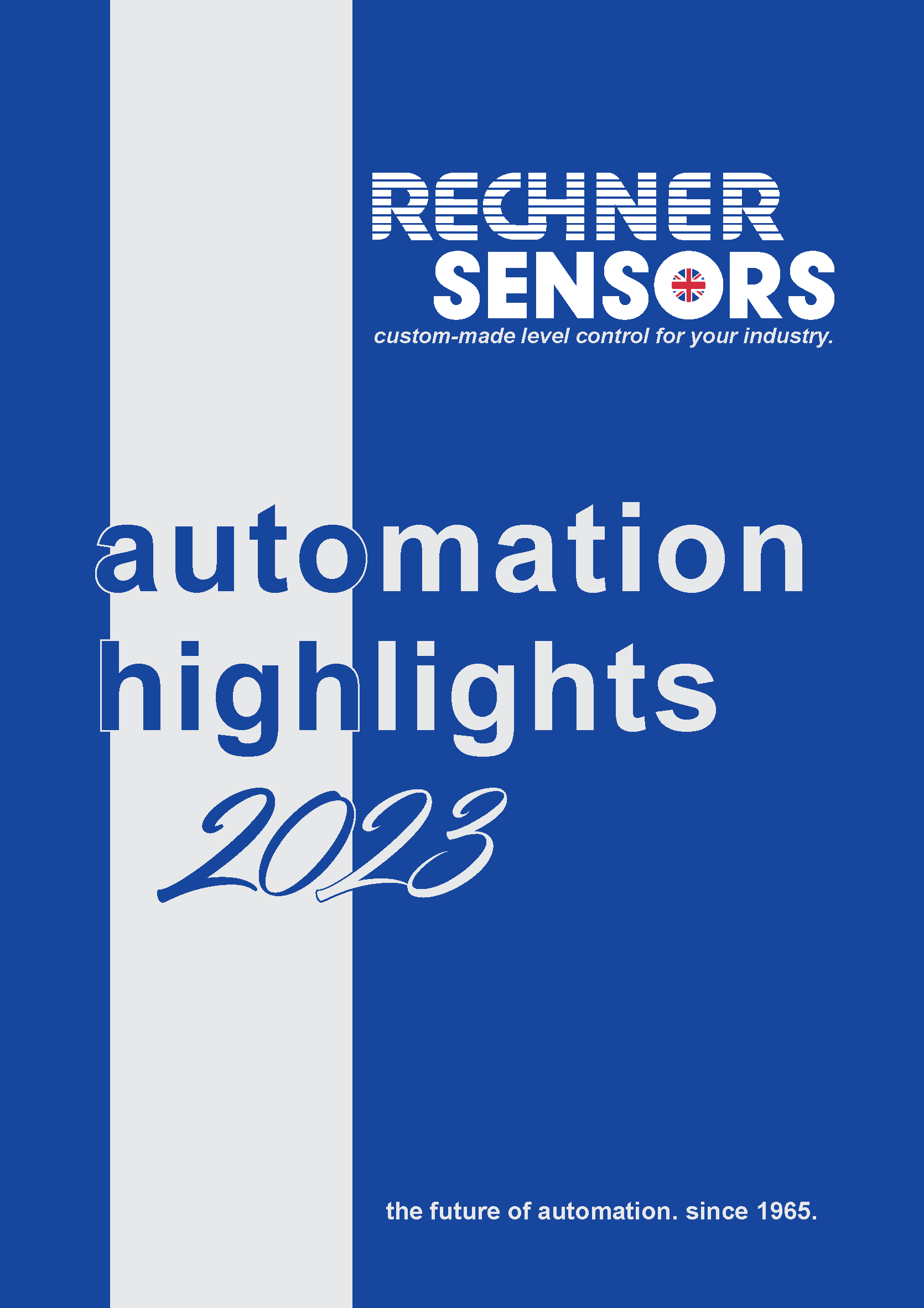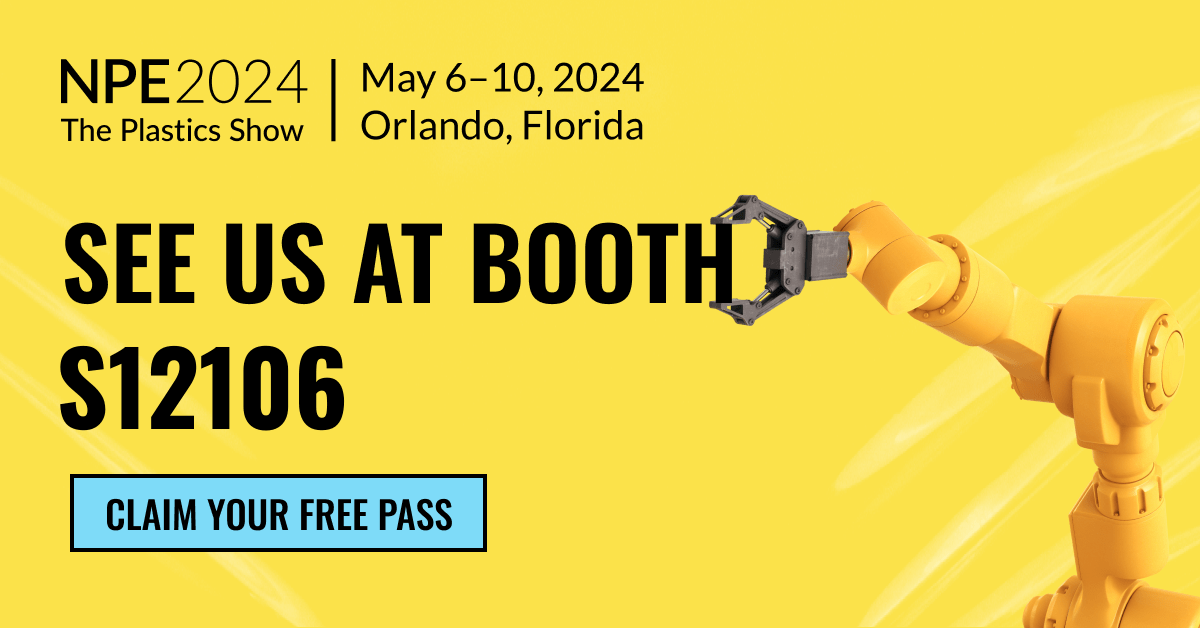www.rechner.com /
Trade Shows
Rechner will be showing at NPE in Orlando this May. Visit us in BOOTH S12106. Click on the banner above for free registration!
The LevelMaster Sensor
See more practical demonstrations of our sensors working with real products on our YouTube channel: Rechner Sensors NA official YouTube channel
Featured Applications
Highlights 2023

Edition: 2023
Our 2023 highlights catalog is out! Featured in this catalog is a variety of new sensors for food applications, for leak detection, with multiple programmable switching points, for level control in small containers, for analog level measurement, for Ex applications, and our miniature instrinsically safe inductive sensor.
Capacitive Sensor Specialists
Rechner Sensors is a specialist in capacitive sensing technology for automation, level control, and quality control applications. The Rechner product line includes over 3,000 capacitive prox, inductive prox, magneto-resistive sensors, power supply logic controllers, flow sensors, and HazLoc barriers: all in different sizes and mounting options.
Subscribe to our e-mail news feed by clicking this link: Subscribe
What is a capacitive sensor?
A capacitive sensor is a switch that has no moving parts. They are used in industrial production and industrial automation applications to detect the position, presence, or level of all types of products.
How do capacitive sensors work?
Capacitive sensors work by measuring the dielectric of the material around the sensor. This dielectric value increases both when there is more material in front of the sensor and the closer that the material gets to the sensor. This means that capacitive sensors work differently than inductive proximity sensors. Capacitive sensors can detect virtually any material whereas inductive sensors are designed to sense only ferric materials. Capacitive sensors are indifferent to color and work with both liquids and solids.
Since all materials have different dielectric properties, it is possible to adjust a capacitive sensor to detect the presence of a specific material under a variety of conditions. This makes capacitive sensors great at detecting the presence of objects (especially non-metal objects) and detecting the level of material in containers, tanks, and silos.
Rechner capacitive proximity sensors can detect and switch reliably with materials that have dielectric constants as low as 1.1 Er. Rechner capacitive sensors also work at high temperatures up to 250 degrees Celsius (482 degrees Fahrenheit).
Capacitive sensor applications
Capacitive sensors can be used in a large variety of applications. Here are a few common uses for capacitive sensors:
- Level control of powders and solids. This includes products in the plastic industry and in high temperature + viscous products like hotmelt glue.
- Cut to length measuring systems.
- Level and position detection sensors in food applications. This Includes inside of ovens, silos, batching tanks, refrigerators, and oil fryers. It also includes products that have high conductivity such as ketchup, mayonnaise, and fish batters.
- Leak detection sensors. This includes the Silicon wafer industry, pharmaceutical industry, and in areas where the is a risk of gas explosion like in diaphragm pumps.
Capacitive sensor design
Capacitive sensor design is highly driven by application. Most of Rechner's capacitive sensor designs have been driven by an application first mindset.
Rechner sensors is willing to help when customers bring a market demand for difficult applications that require the sensor to be made of a specific material, have specific mounting requirements, and/or have industry certifications.
Types of capacitive sensors
Capacitive proximity sensors / Capacitive proximity switches
Capacitive proximity sensors, sometimes referred to as capacitive proximity switches, are ON/OFF output devices that are used to detect the presence of an object at a specific distance or the presence of material in front of the sensor. These sensors can detect the presence of objects through non-conductive containers such as cardboard boxes, and plastic or glass vessels. While some applications benefit from the sensor being in direct contact with the material you wish to detect (like in level applications) it is not always necessary.
Capacitive distance sensors / Capacitive analog sensors
Analog versions of capacitive proximity switches also exist. These sensors will not just turn ON or OFF when a specific amount of material is in front of the sensor but will give you a continuously changing reading as more material is moved in front of the sensor or as an object gets closer to the sensor.
Users can install these sensors for quality control or for measuring the height of a material. Using these sensors on the side of a plastic/glass container or beside a stack of paper can warn you that you are running out of materials before they completely gone.
They can also be used for multiple different products while eliminating the need to readjust the sensor for different materials. The most common method of implementing this is by creating different profiles for different products in a computerized system like a PLC.
Capacitive probe level sensor
Unlike capacitive proximity sensors, probe style level sensors are designed specifically to be in direct contact with the target material. Once the level in your container has reached a specified height, the sensor will switch and provide an electrical signal that can be used to control your equipment or sound an alarm. Level applications often have more than one level detection requirement (i.e. high and low-level detection) or require continuous level measurement with an analog sensor. Applications for these sensors are diverse, ranging from small vessels where the height of the material only changes by a fraction of an inch - up to large filling hoppers more than 6 feet tall.


























